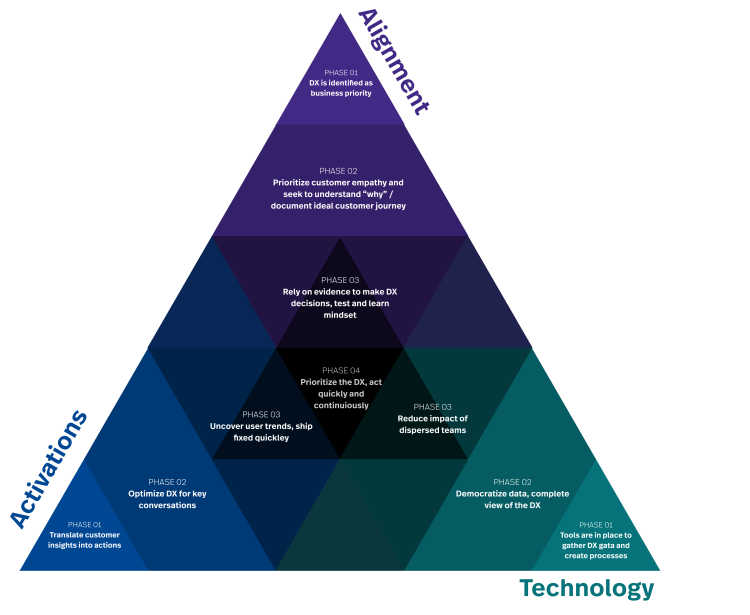For today’s businesses, prioritizing the digital experience isn’t an option—it’s a must. This fact is validated across industries as leading companies like Chipotle, Peloton, Fortive, Gap, Forbes, and more invest in digital—and see big results.
What’s more, consumers’ expectations about digital experiences are on the rise. According to a FullStory survey, 58% of consumers surveyed said they wouldn’t return to a business that provides a poor digital experience.
Yet many organizations still struggle to manage and improve their digital experience, and fail to provide an experience that gives their customers and users exactly what they need, at the time they need it, with no friction or frustration.
The time when digital experiences serve as a key differentiator between online businesses is here. Now, there’s a proven, phased approach to assessing your organization’s digital experience maturity, along with actionable steps to take to advance to the next level.
Keep reading, or for more, download the complete guide to digital experience maturity.
Pillars and phases of digital experience maturity
It’s easy to see that creating an excellent digital experience for your customers or users is critical; what’s more difficult is understanding exactly how to get there. That’s why this maturity model is here—to help product, engineering, and UX teams assess your current digital experience maturity and map out the steps to improvement.
While there are many different factors that contribute to a positive digital experience, they can be broken down into three main buckets: Alignment, Activations, and Technology. Keep reading for a summary of the characteristics that demonstrate organizational maturity in each category.
Alignment
When it comes to managing and delivering an ideal digital experience, organizations that are aligned on goals are able to effectively make autonomous decisions.
In the context of alignment, our research shows that organizations with more mature digital experiences tend to have:
An executive owner who is responsible for digital experience success.
Shared and transparent organizational objectives for digital experience.
An ability to create consensus at the top-level around digital experience priorities.
Cross-functional team structures to enable digital experience improvement.
Democratized information that facilitates employee autonomy.
Prioritize customer empathy and seek to understand the why behind customer behavior.
Activations
Creating a better digital experience is critical to earning and retaining customers—which, ultimately, is key to driving growth and revenue for digital business. And while integrated technologies and relevant data are an invaluable foundation to digital experience maturity, they mean nothing if an organization can’t act on the information they provide.
Our research shows that organizations with more mature digital experiences are more likely to be able to:
Translate customer insights into actions.
Optimize the digital experience for key conversions.
Think of their digital experience as a competitive differentiator.
Maintain a test-and-learn mindset.
Set long-term digital experience objectives.
Technology
An organization’s ability to deliver a more perfect digital experience relies on its ability to foster organizational alignment and agility—and technologies contribute to alignment and agility in many ways.
On average, organizations that report delivering better digital experiences are more likely to have chosen technologies that:
Allow teams to directly access the data they need to do their jobs—and ensure everyone is making decisions based on the same data.
Have a complete view of the customer’s digital experience.
Are highly integrated, diminishing the impact of dispersed or disconnected teams.
Allow teams to ship fixes and improvements quickly.
This is just a small peek at the complex world of digital experience maturity—and, as you likely know, advancing your organization’s DX doesn’t happen overnight. It requires company-wide buy-in and alignment, deliberate technology investments, and an action-oriented strategy.
To start mapping out your organization’s path to digital experience maturity, download our complete guide to DX maturity.





